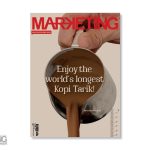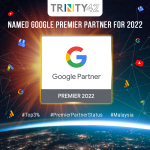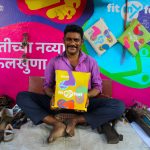As India celebrated its independence day last month (15 August) Cadbury unveiled a Unity Bar to celebrate the nation’s diversity by fusing together dark, blended, milk and white chocolate into one product. It took two weeks for the western media to notice the work and condemn it as another example of brandwashing, but is it?
Ogilvy & Mather Mumbai’s campaign coincided with India’s independence celebration. However, in the west the work it was accused of trying to self-servingly “end racism” with a cynical product launch.
But there was more than meets the eye with the campaign.
United in One Bar
While the launch video surpassed 4.2m YouTube views, the campaign was more nuanced in print.
An ad campaign in The Economic Times spread ‘unity’ by using” non-state language” headlines in regional editions under the strapline ‘Sweet things happen when we unite’.
Mumbai readers (who speak Marathi) were delivered a Kannada-language headline. In Delhi (Hindi) Telugu was used. In Bangalore (Kannada) Marathi took the lead. This broke from convention Karthik Srinivasan, a comms expert formerly of Ogilvy, Flipkart and Edelman, explained.
While most citizens use government-favoured Hindi for “practical reasons” Srinivasan said “their love for regional languages is high.”
“Citizens respect and revere their local language since it is closely tied to their identity,” he went on. The campaign benefited from this although one edition used the wrong language mix, resulting in confusion.
Furthermore, it wasn’t just in the west that the placement of the white chocolate at the top and darker ones at the bottom tier evoked a racist allegory. In its home market, Srinivasan said it played into the idea that “people in the north Indian states are fairer than the ‘darker’ complexioned south which is a sweeping and ignorant generalization that is as racist as it is stupid and baseless.”

He said the campaign wisely avoided any mention of religion, which can prove divisive in that market.
“Any talk of looking beyond religion, language or caste-based differences always brings in naysayers, particularly on Twitter… thankfully, there was no religion angle in this campaign, but language is a very sensitive topic too.”
Important Conversation
Saurabh Parmar, a comms consultant based in New Delhi, said the Independence Day “usually sees thousands of brands clamouring to say the same thing in a different way”. Parmar bundled Cadbury into this mix condemning it for ignoring its “brand truth”.
“Chocolate, unlike vegetables and proteins, isn’t an essential part of our diet. Few people would eat just 75% and leave the white or dark segment. When creating a product, first and foremost, it should be something people want.
“The symbolism is farcical. In India, we’ve been listening to ‘unity in diversity’ since childhood so a brand messing up a chocolate bar to say that doesn’t really connect.”
In fact, he believed the campaign will work with awards shows better than the readers who saw the ads in isolation.
Parmer regrets that as diversity and unity are a “more important conversation in India given its current state of politics”. It would take a “more substantial” campaign to really tackle the issue. He pointed to a recent scandal facing Zomato. A customer tweeted disgust that his meal was delivered by a non-Hindu driver.
Zomato divided the public with the following response. “Food doesn’t have a religion. It is a religion.”
Parmar concluded: “Cadbury wanted to speak about something important without being brave but cute. The campaign didn’t make an impact in India, and it backfired in the west.”
Bravery
Chris Arning, founder of Creative Semiotics, deflected the notion that the work was “brave”. For the marketers, “it is a commercial decision, and a calculated risk”.
“Is the potential for publicity and exposure, regardless of the polarity of response, able to justify the potential backlash?” Nonetheless, the campaign is more radical than some western audiences may think.
Arning said: “From what I understand of the ingrained nature of colourism and casteism in India (and the implicit superiority of white skin castes in campaigns for lighteners such as Fair and Lovely) – that there is more bravery in the gesture than there would be in the UK.”
In the UK, consumers are more used to brands “appropriating blackness – and less so brownness” as brand ambassadors, Arning went on.
Meanwhile, on the bar itself he said: “A collection of different shades when it is used functionally to show a range is the sort of thing you might expect in a Fenty or cosmetic colour palette – to show the customer that their colour pigment is catered for is reasonable: but in this case it is rather used to make some sort of grand moral point.”
Some wondered whether there was a greater issue with the speaker, rather than the message.
Arning said: “There is irony in this being chocolate – a substance associated with its own history of colonial exploitation as well as occasionally being used as a derogatory epithet of black and brown peoples. Because chocolate is a trivial confectionery, there is, therefore, an inbuilt asymmetry between the gravity of racism as an issue and the humble bar of chocolate.”
Those mocking the campaign in the west do so with “no context of understanding the Indian ads… groupthink is the norm – when someone says that it is racist, most people conclude that to be true without spending even a few seconds to understand the context,” said Srinivasan.
Arning concluded: “Given the Hindutva resurgence under the ruling party anything that publically vaunts an ecumenical norm is daring,” but noted that the “true sign of a healthy society without racism is not tolerance but indifference.”
source: http://www.thedrum.com
MARKETING Magazine is not responsible for the content of external sites.
An afternoon of conversations we never had, with leaders most of you never met.
Discover what’s possible from those who made it possible. Plus a preview of The HAM Agency Rankings REPORT 2024.
Limited seats: [email protected]
BOOK SEATS NOW









